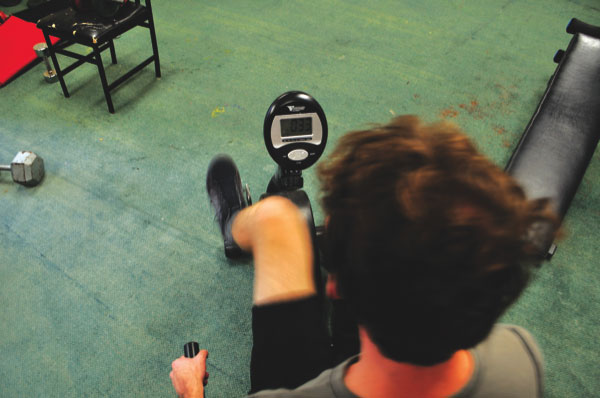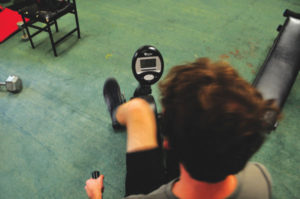Christine Forde
Contributor
Do you have time to exercise? Doubtful, with homework, lectures, labs and seminars—plus a part-time job, alongside major projects and essays. And who in their right mind wants to exercise when they barely have a moment to breathe? You are definitely doing yourself a disservice. A big one.
Let’s start with the basics. Physical fitness, according to the Can-Fit-Pro fitness instructor specialist handbook, is defined as “an improved physiological state that leads to improved health and longevity.” It’s broken down into primary components which include: cardiorespiratory capacity, muscular capacity, flexibility and body composition. It sounds very complex but actually, it reaffirms our general knowledge and may shed light on important elements that we never really thought about.
Cardiorespiratory capacity is about our bodies’ intake of oxygen which includes how much we take in, how often we take it in, and how it creates energy. What you need to know is that the more oxygen your body takes in, the more efficiently it will run. The way to improve our oxygen intake is to exercise (think: ability to run across campus or up the stairs to your class without becoming winded).
Muscular capacity includes muscular endurance; strength and power. Improving these will increase your own strength or endurance (think: carting your heavy backpack around all day or picking up your groceries).
Flexibility is defined as the “range of movement that a joint is capable of performing.” But did you know that improving your flexibility can actually decrease your chance of injury (especially during exercise) and improve things like posture?
Lastly, body composition is the ratio of your fat-free mass to your fat-mass. Having more muscle on your body improves your metabolism. When that happens, you burn more fat at rest. There are further benefits: decreased risk of cardiovascular disease, decreased resting heart-rate, and an overall improvement of endurance, strength, and energy. Other components include balance, agility, coordination, power, speed, reaction time, and mental capability.
These components can be improved by a regularly applying these primary things—we decide how we do it.
But Alana John, fourth-year kinesiology major and experienced fitness instructor specialist says, “if we were all exactly the same, there’d be a prescription. But we’re not.”
What she means is that each and every person needs to find exactly what works for him/her. For one person, it might be including a step class four days a week to their already healthy diet. For someone else who works out six days a week, it might be engaging in 30 minutes of cardio and 30 minutes of weight-training, or perhaps cutting alcohol intake and eating more whole foods.
It is an admirable thing to commit to an intensive exercise program but the most important question is: what kind of fitness do you like? Some of us hate exercise. No matter what we do to convince ourselves, we can’t stand the idea of doing something strenuous just because it’s healthy. The key is to find something challenging that you genuinely enjoy to keep you interested. That makes all the difference in the world.
Third-year nursing student Isha Lakhina says brightly, “I love dancing—like Zumba, it’s something you can enjoy.”
Her classmate, Shauwminie Kumarasamy nods, “I’ve heard really good things about hot yoga. A friend of mine did hot yoga, she said she felt amazing and her skin felt great. I’ve always wanted to try it.”
When asked what one needs to in order to be healthy (in all senses), Kumarasamy wisely replied, “Balance.” So while all of the components of physical fitness will improve your health and add years to your life. They will also add quality to your life, creating balance and that is irreplaceable.
According to Can-Fit-Pro, “a sense of optimal wellness is just as important as physical health.” There are four understood areas of wellness: social health, mental health, emotional health, and spiritual health. When we combine all of the components of optimal wellness, we can create balance in our lives and this is something we do have control over.
John says, “[the] best shape I was in was when I was depressed. People forget that exercise is also for your mind and body. You’re too busy to think ‘Oh when I go on the step my butt jiggles’ because you’re using your mind to think about what you’re doing. It’s not just about the aesthetic.”
This brings us to goal-setting. Maybe you want to look like the next Chalene Johnson (creator of Turbo Kick and similar cardio-kickboxing programs) or Michael Phelps (Olympic Games gold-medalist). Those are ambitious goals and if that’s what drives you, then find the fitness program that best suits you and your lifestyle and make it happen.
Even if your goal is achieving better health, gaining more energy, or improving your immune system, as John says, “whatever it is you need to do—yoga fusion, Zumba, or whatever—take that time for yourself. What are your goals? Make the time and chase after it.”



